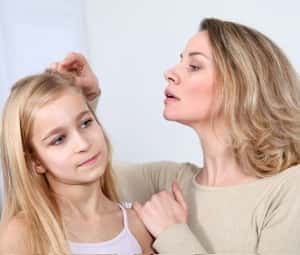
Parents dread the call from school that they must pick up their child now because the youngster has lice. At that point, the question of how to get rid of lice suddenly becomes urgent.
There are over-the-counter lice shampoos containing permethrin (Nix) or pyrethrin (Rid). Both get rid of adult lice, and permethrin also kills lice in eggs (nits). Over the years, however, they have become less than completely effective because the lice in many parts of the country have developed resistance to them.
A review of the medical literature suggests that these treatments are no longer the first choice for treating lice (Prescrire International, July, 2014). Instead, it recommends a method that kills lice through physical mechanisms. The recommended choice is dimeticone because it smothers them. It is not available in the US, however. Many of our readers use Listerine to get rid of lice.
Listerine to Get Rid of Lice:
Q. I’m 48 and never had an experience with lice until now. My 7-year-old daughter was sent home from school with lice today.
I called a friend who told me about the Listerine treatment. Man, did it kill those little buggers dead! My wife was picking dead bugs out of my daughter’s hair.
We will do another treatment in a couple of days to make sure the lice are all dead. We used about four or five caps full, enough to soak her hair and get rid of lice.
A. We first heard about using old-fashioned amber Listerine against lice over 15 years ago. A nurse told us that the secret ingredient in the mouthwash is the alcohol, which suffocates lice fast.
To treat lice, people often soak their scalps with Listerine, wrap damp hair up in a towel for half an hour and then rinse the Listerine and lice away. Repeating the process every five to six days will kill emerging lice as they hatch, since the mouthwash does not get rid of lice in eggs. Combing the hair to remove nits also makes the treatment more effective.

